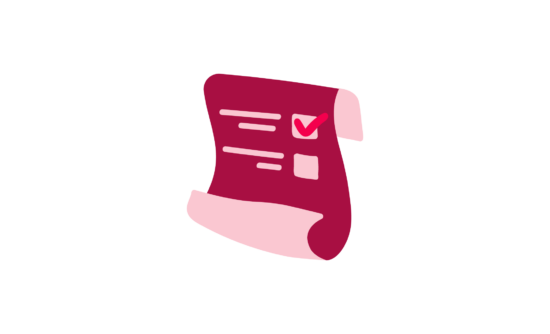| Please note: This article does not constitute legal advice, and you should consult a legal expert for any compliance or legal concerns. |
Introduction
As they say, “When in doubt, ask legal.”
Navigating the labyrinth of laws and regulations in today’s business environment can feel overwhelming. From employment practices to payroll protocols, ensuring compliance in every region where you operate is essential—not just for peace of mind but also to protect your organization from costly penalties.
But compliance isn’t just about avoiding fines or passing audits. At their core, labor laws exist to protect people. They’re meant to ensure fair treatment and safe work environments, setting standards that support employees and organizations alike. If a certain practice or policy risks harming people or negatively impacting their work experience, it’s time to call on legal experts for guidance.
For small to medium-sized businesses that rely on lean HR teams and don’t have legal departments (or rely on external counsel), regular compliance reviews are the secret to staying on track. They’re your best bet to avoid financial penalties, ace audits, and create a work environment where everyone feels supported and secure.
With the right approach (and the right tools) you can tackle compliance like a pro.
This guide walks you through the key steps for conducting a self-audit—from the basics to a detailed, step-by-step process:
- The key players in compliance reviews: how HR and Legal teams intersect and collaborate
- The financial benefits of staying compliant (and the high costs of getting it wrong)
- What you need to consider before starting an audit
- Understanding state and national regulations
- Why keeping up with regulatory changes is non-negotiable
- How HR tech can help you stay compliant
<<Learn how to tackle compliance like a pro. Download the free HR guide to self-auditing.>>
Who’s who in your HR compliance review?
Compliance is a team effort, with HR and Legal each playing indispensable roles. Together, they ensure your organization adheres to evolving laws and regulations while nurturing a fair and supportive workplace.
Here’s how their responsibilities break down and intersect:
HR’s responsibilities: Making policies work for people
HR teams are on the front lines, translating legal frameworks into actionable, people-focused policies. Their role is crucial for building trust and ensuring compliance is part and parcel of daily operations. Their responsibilities include:
- Policy implementation. HR ensures company policies align with local labor laws, tailoring them for cultural and regional relevance. From leave entitlements to remote work policies, HR makes sure company policies comply with legal requirements while addressing the needs of the organization’s people.
- Training teams. HR is the go-to for compliance training, organizing sessions that educate team members on workplace conduct, data privacy, and security practices. These initiatives build awareness and reduce potential compliance risks.
- Monitoring and reporting. HR regularly tracks compliance metrics—like working hours, anti-harassment initiatives, and leave balances—identifying and rectifying discrepancies before they escalate into larger issues.
- Recordkeeping. Accurately managing documents like contracts, benefits, and separation records is a core HR responsibility. Keeping these records up-to-date ensures compliance with regulations and organizational needs.
Legal’s responsibilities: The regulatory experts
Legal’s role focuses on interpreting intricate legal mandates and safeguarding the organization’s legal standing. Drafting and reviewing employment contracts, managing litigation, and reporting breaches to regulatory authorities are key responsibilities within Legal’s domain, as well as:
- Regulatory research and interpretation. Legal teams dissect complex local, national, and international laws, ensuring that your policies meet compliance requirements.
- Risk assessment and mitigation. By identifying potential vulnerabilities, Legal provides strategies to reduce risks—minimizing exposure to penalties and legal disputes.
- Audit and investigation support. Legal professionals often lead audits to confirm adherence to legal standards and manage investigations into potential compliance breaches.
- Contractual and data privacy compliance. Legal handles compliance with data protection laws (e.g., GDPR), intellectual property regulations, and contract management across different regions.

Where HR and Legal meet
Collaboration between HR and Legal teams is essential. By working together closely, these two teams can ensure their policies and practices are legally compliant and operationally effective. This partnership creates a framework for a fair and compliant workplace, that includes:
- Developing company policies. HR and Legal collaborate to craft policies that are legally sound and culturally sensitive, ensuring they’re feasible for day-to-day operations.
- People relations and investigations. In cases of harassment, discrimination, or ethical violations, HR manages initial reporting, while Legal steps in for investigation and, if necessary, legal proceedings.
- Global labor law compliance. Legal lays out the regulatory framework, while HR executes it at an operational level to meet labor standards worldwide.
- Data privacy and security. Legal ensures adherence to global data privacy laws, such as GDPR, while HR oversees secure data access and the integrity of professionals’ records.
Why is being compliant important?
Ensuring compliance might be enough to give you a headache, but neglecting it can lead to even greater pain in the long run:
For example, J.P. Morgan received a $200 million fine for recordkeeping violations. And Uber had to pay $148 million for a data breach cover-up.
Besides wince-worthy fines, non-compliance can also:
- Damage your organization’s reputation. This can diminish customer and investor trust, significantly impacting your business’ finances.
- Lead to expensive litigation. Lawsuits are costly, not just because of lawyers’ fees but also because of the time and productivity they cost your HR professionals.
- Increase turnover. Not complying with key labor and workplace safety laws can prompt your people to look for a healthier and more compliant workplace.
It’s undeniable that non-compliance packs a nasty punch. But, by conducting regular HR compliance reviews and implementing strong self-governance practices, you can avoid substantial fines, mitigate risks, and safeguard your organization’s reputation.

What to consider before you start auditing
Conducting a compliance audit requires careful planning. The challenge lies in meeting current requirements and preparing for changes in HR compliance regulations.
By addressing the following points before you start, you can build a solid foundation for an audit process that keeps you flexible and on the right side of the law:
State and national regulations
Compliance begins with understanding the regulations that apply to your organization—not just in your current locations, but also in regions you’re considering expanding into.
City, state, and national compliance requirements can vary widely, and each level may introduce unique obligations.
For instance, expanding into a new US state might trigger additional requirements for wage reporting, benefits, or paid leave policies. Ensuring your worksites comply with local regulations is essential for smooth operations.
Keep an eye on upcoming changes
Regulations evolve, and staying ahead of new HR compliance laws is critical to avoid surprises. This is particularly important in the context of shifting political and economic landscapes:
- Potential compliance changes in the United States. The second Trump presidency is bringing shifts in labor laws and may include changes to wage and hour laws or restrictions on unionization. Anticipating these shifts allows you to plan ahead and adjust policies proactively.
- Size-based compliance laws. In the US, many regulations—such as the Family and Medical Leave Act (FMLA) or the Affordable Care Act (ACA)—trigger based on company size. Keep a clear list of key milestones, such as reaching 50 or 100 team members, to identify when new compliance obligations come into effect.
- Corporate sustainability laws. Investing in Environmental, Social, and Governance (ESG) programs used to be optional. Today, reporting on this has become law in certain regions. Regulations in Europe and the UK, like the Corporate Sustainability Reporting Directive (CSRD) now require companies to disclose their environmental and social impacts, including workforce-related data such as diversity, working conditions, and pay equity. Staying compliant means building processes to collect and report this data accurately.
HR tech can be a huge help when it comes to your compliance efforts. A Human Capital Management (HCM) platform can be a powerful ally, helping you track compliance issues and steer clear of non-compliance with data regulations.

Leverage HR tech to help keep your business compliant
HR software can be a powerful ally in managing key compliance tasks, helping you reduce the risk of errors and oversights. These tools simplify compliance management by breaking tasks into five categories:
- Track. Monitor employee records, work hours, time-off balances, payroll compliance metrics, and trends such as retention and attrition. With centralized insights, your organization can stay informed and ahead of potential issues.
- Enforce. Automate company policies and ensure adherence to labor laws and data privacy regulations in every location, reducing the risk of manual errors and inconsistencies.
- Flag. Identify risks like missing documentation, expiring certifications, or payroll discrepancies before they become larger issues.
- Notify. Send automated reminders about deadlines, policy updates, and compliance requirements to employees and managers, keeping everyone on the same page.
- Store. Secure and maintain sensitive employee data and compliance records in a centralized system, making it easy to access, manage, and retain information for audits or reporting needs.
HR platforms with built-in analytics allow your organization to proactively review and address compliance metrics, giving you the ability to act before potential issues escalate.
A multi-purpose HR platform not only simplifies compliance tasks but also supports broader HR functions, such as workforce planning, performance reviews, and employee engagement.
By consolidating compliance tracking with other HR activities, your organization can integrate compliance into its overall cost management strategy. These tools give your HR team greater flexibility, empowering them to focus on strategic initiatives while maintaining compliance with evolving regulations.
<<Learn how to tackle compliance like a pro. Download the free HR guide to self-auditing.>>

Compliance issues your HCM can help you audit
When it comes to compliance, a solid HCM has your back.
With features like compensation tracking, people analytics, and regulatory reporting, an HCM can help your organization tackle even the most complex compliance challenges with ease.
Pay equity
Modern HCM platforms include compensation and equity modules that provide flexible reporting and analytics. These tools enable your organization to assess financial metrics and pay gaps, helping you uncover and address disparities.
By understanding the causes of pay gaps, your organization can take steps to ensure equitable compensation.
Equal opportunity
HCMs come with a range of tools that can help you ensure there’s equal opportunity in your workplace.
Recruitment and hiring modules, people analytics, and DE&I (diversity, equity, and inclusion) tracking features give you a comprehensive overview of workplace dynamics. DE&I features are particularly useful for tracking hiring and promotion data by demographic.
These features allow you to spot any patterns that may be contributing to inequity and dissatisfaction among your people and how they correlate with productivity.
Surveys and anonymous reporting tools bring your people’s workplace experiences to light, including potential issues like harassment or discrimination. These insights can help you gauge equity and workplace culture issues, so you can put initiatives in place to address them.

Minimum wage, pay deduction, and overtime compliance
The best modern HCMs come with time, attendance, and compensation solutions. These tools help you manage and track historical pay data, overtime, and deductions while ensuring compliance with local wage laws, time tracking regulations, PTO requirements, and paid sick leave regulations.
Some HCMs even come with automated warnings, ensuring organizations comply with local laws like California’s meal break and rest break law.
These tools help you manage and keep track of breaks and deductions, minimum wage requirements, PTO compliance, and overtime, reducing the risk of non-compliance across different sites.
Government reporting
Modern HCMs make regulatory reporting a breeze by simplifying data compilation for government submissions.
For example, in the European Union, regulations like GDPR and ESG-related reporting require precise data management. HCMs simplify these processes, allowing you to quickly access data and generate reports on your workforce, sustainability, and regulatory compliance—so you can stay compliant while saving your HR team valuable time.
Training
Safety, anti-discrimination, and harassment training are critical components of compliance—and built-in learning solutions in HCMs ensure you’re covered.
They simplify tracking training completions and make it easy to retrieve records for audits or government inspections. Some platforms even let you deliver courses directly within the system.
Whether it’s tracking participation in safety drills or ensuring your people complete anti-harassment courses, HCMs provide a simpler way to manage mandatory compliance-related training.
Documentation
With a thicket of regulations to navigate and comply with, it’s easy to get lost in a compliance paper trail.
An HCM gives you a clear path forward by acting as a single repository for all documentation. Modern HCMs centralize all critical records, including performance reviews, behavioral citations, immigration documentation, and organizational policies.
This ensures accessibility and accuracy, enabling your organization to meet documentation standards effortlessly.

Recommended For Further Reading
Allowances and accommodations
With remote and hybrid work now the status quo, it’s all the more important to use a modern HCM that allows you to track special allowances.
Tracking this data highlights equitable treatment across roles, statuses, and work structures, helping your organization manage benefits fairly and transparently. It can even empower your people to build and manage their own benefits.
These tools help contribute to a workplace culture that’s equitable and inclusive and puts your people’s needs first.
Compliance done right
Compliance doesn’t have to be an uphill battle.
With the right approach and tools, compliance becomes manageable—and a valuable part of your people strategy.
Modern HCMs simplify compliance by providing integrated tools for data management, tracking, and reporting. This makes it easier to ensure pay equity, promote equal opportunities, and manage processes like government reporting and training.
Compliance isn’t just about avoiding fines. It’s an opportunity to build a fair, transparent, and supportive workplace. By investing in a forward-thinking HCM, you can protect your business, simplify compliance, and empower your people to thrive.
<<Learn how to tackle compliance like a pro. Download the free HR guide to self-auditing.>>

